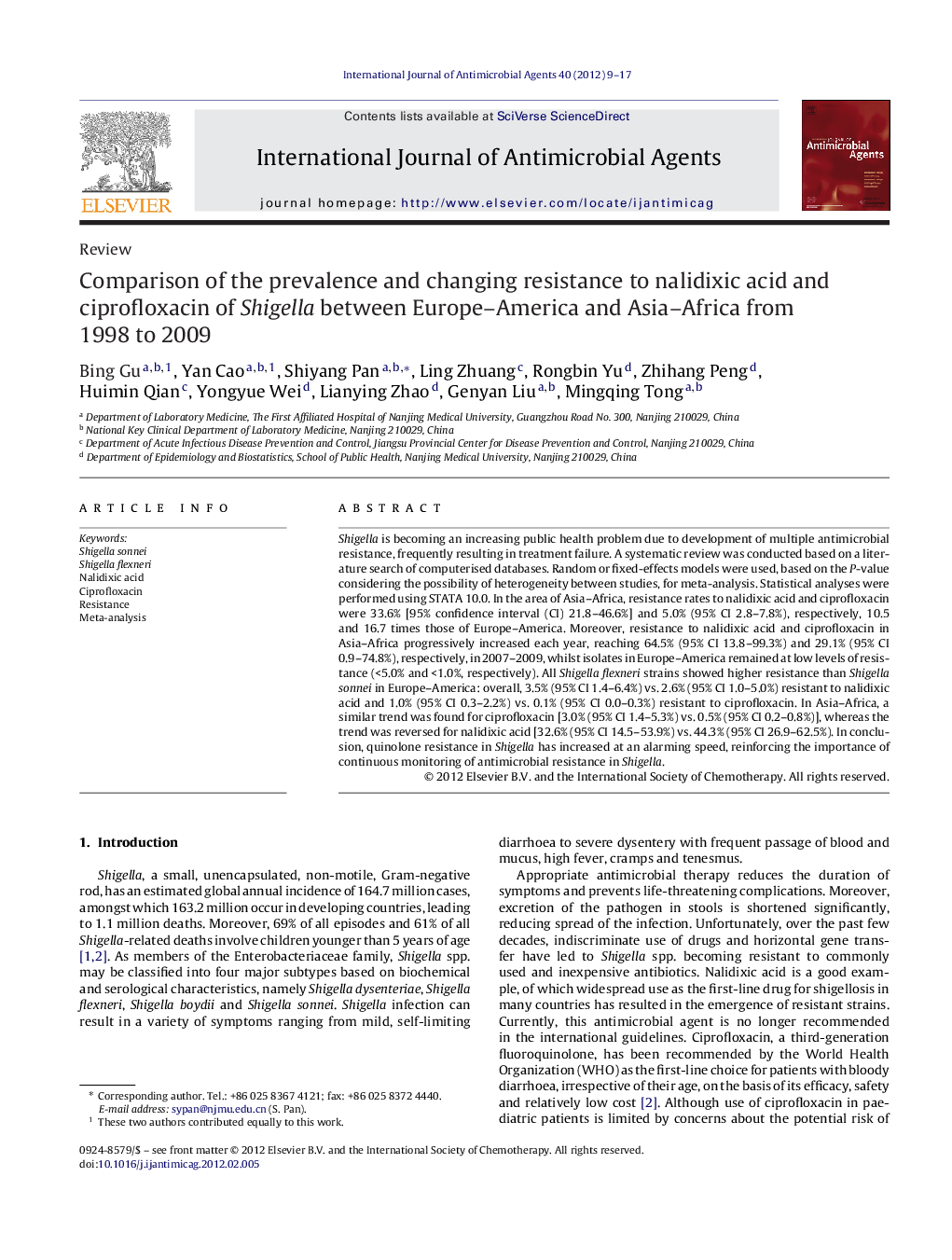| Article ID | Journal | Published Year | Pages | File Type |
|---|---|---|---|---|
| 6118140 | International Journal of Antimicrobial Agents | 2012 | 9 Pages |
Abstract
Shigella is becoming an increasing public health problem due to development of multiple antimicrobial resistance, frequently resulting in treatment failure. A systematic review was conducted based on a literature search of computerised databases. Random or fixed-effects models were used, based on the P-value considering the possibility of heterogeneity between studies, for meta-analysis. Statistical analyses were performed using STATA 10.0. In the area of Asia-Africa, resistance rates to nalidixic acid and ciprofloxacin were 33.6% [95% confidence interval (CI) 21.8-46.6%] and 5.0% (95% CI 2.8-7.8%), respectively, 10.5 and 16.7 times those of Europe-America. Moreover, resistance to nalidixic acid and ciprofloxacin in Asia-Africa progressively increased each year, reaching 64.5% (95% CI 13.8-99.3%) and 29.1% (95% CI 0.9-74.8%), respectively, in 2007-2009, whilst isolates in Europe-America remained at low levels of resistance (<5.0% and <1.0%, respectively). All Shigella flexneri strains showed higher resistance than Shigella sonnei in Europe-America: overall, 3.5% (95% CI 1.4-6.4%) vs. 2.6% (95% CI 1.0-5.0%) resistant to nalidixic acid and 1.0% (95% CI 0.3-2.2%) vs. 0.1% (95% CI 0.0-0.3%) resistant to ciprofloxacin. In Asia-Africa, a similar trend was found for ciprofloxacin [3.0% (95% CI 1.4-5.3%) vs. 0.5% (95% CI 0.2-0.8%)], whereas the trend was reversed for nalidixic acid [32.6% (95% CI 14.5-53.9%) vs. 44.3% (95% CI 26.9-62.5%). In conclusion, quinolone resistance in Shigella has increased at an alarming speed, reinforcing the importance of continuous monitoring of antimicrobial resistance in Shigella.
Related Topics
Life Sciences
Immunology and Microbiology
Applied Microbiology and Biotechnology
Authors
Bing Gu, Yan Cao, Shiyang Pan, Ling Zhuang, Rongbin Yu, Zhihang Peng, Huimin Qian, Yongyue Wei, Lianying Zhao, Genyan Liu, Mingqing Tong,
